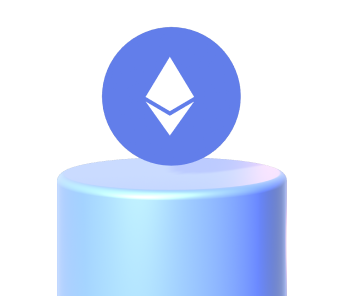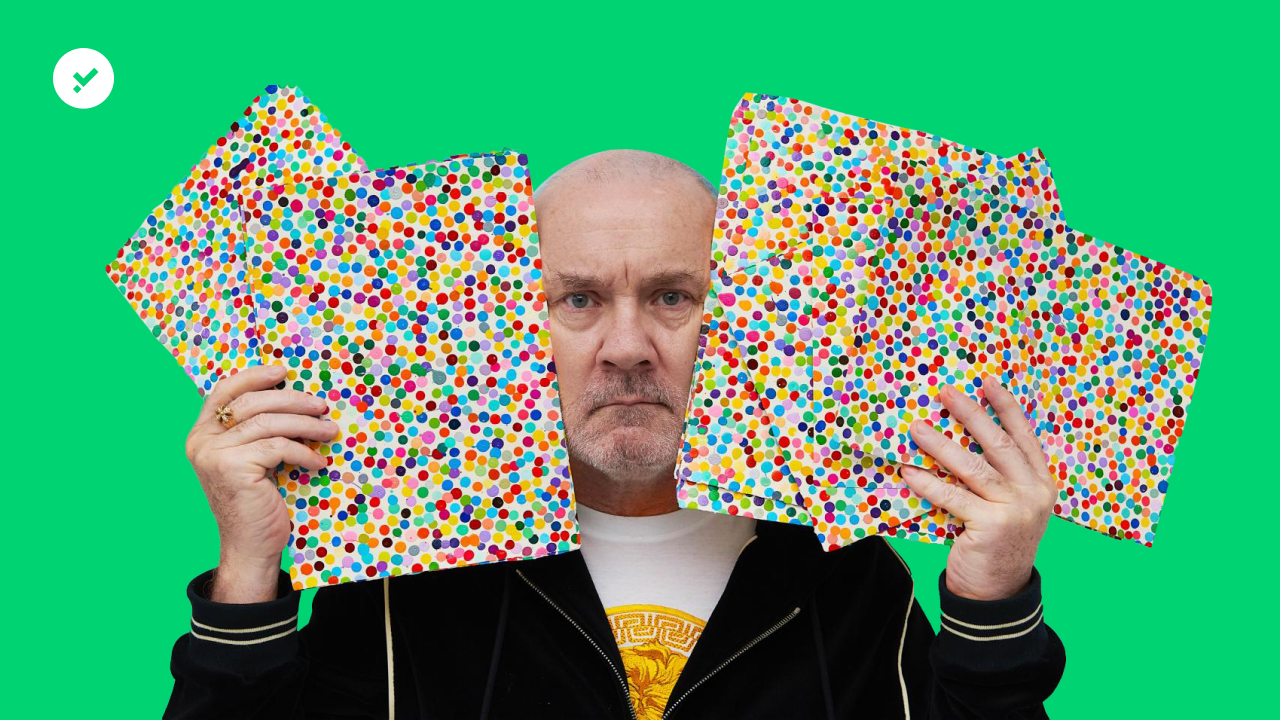Damien Hirst’s NFT pieces combine his subversive art with blockchain technology – explore the British artist’s pieces and collections
Damien Hirst is one of the most influential contemporary artists of our time, his controversial and provocative artwork has been the symbol of British art since the 1990s. Hirst has distinguished himself in his career by his tendency to break away from the traditional art world channels such as galleries, preferring instead to address the audience directly. Perhaps this is precisely why he decided to experiment with NFTs, which promise to revolutionise the transmission, fruition and market of art. In a recent tweet, Hirst explained that he believes in art in all its forms and that the NFT world is very exciting. For the artist, the Web3 community is doing great things and has exciting ideas. A technology that disrupts the canons of art like NFT can only intrigue such a subversive artist! This article looks at all of Damien Hirst’s NFT pieces and collections.
The Currency, the first of Damien Hirst NFT pieces
Damien Hirst’s first NFT collection is called The Currency. What are NFTs? NFT stands for ‘non fungible token’ and refers to a particular type of token, i.e. an asset registered on the blockchain. NFTs differ from cryptocurrencies in that they are not fungible, i.e. they cannot be exchanged for other equivalent NFTs. Each NFT is unique, which is why they are used to create unique digital products like works of art. The Currency art project takes two different shapes, in that it consists of 10,000 NFTs attached to as many physical art pieces painted by Hirst in 2016. The physical pieces are A4 sheets depicting compositions of polka dots. These paintings were categorised by AI based on four variables: how much the polka dots overlap, the amount of sketching, the texture and the density of the drawings. The same AI also assigned titles to the paintings based on the lyrics of Hirst’s favourite songs. The NFT collection was sold in 2021 at $2,000 per piece.
The Currency is not just artistic expression in two mediums, but an experiment on the public’s perception of digital art – Hirst posed the question of whether people value digital or physical art more. Buyers of The Currency were asked to choose by 27th July 2022 whether to keep the art piece in NFT format only and destroy its physical counterpart, or vice versa, so that they would only have one version of the piece. The experiment resulted in physical art winning out slightly, with 5,149 collectors opting to keep the physical version and 4,851 choosing the NFT version. Hirst then began to ‘burn’ the NFTs and the physical pieces that hadn’t been picked, to destroy them permanently. The practice of ‘burning’ is widespread in the crypto world and involves destroying tokens or cryptocurrencies to increase their scarcity and thus their value.
NFTs having an economic value is difficult to grasp for some. At the same time, the idea of digital property equating to physical property is still deeply rooted. In this regard, the Injective Protocol project bought Banksy‘s 2006 piece Morons for $95,000, transformed it into NFT and then burned the physical copy. Their aim was to highlight the indestructibility, immutability and uniqueness of NFTs, and encourage the exploration of a new artistic medium. Banksy’s piece NFT was then sold on Opensea for 228.69 ETH.
One month after its launch, Damien Hirst’s first NFT collection The Currency has generated $25 million in sales. It was the artist himself who announced the milestone on Twitter with a graphic in the shape of a shark – recalling his iconic piece The Physical Impossibility of Death In the Mind Of Someone Living, which depicts a tiger shark preserved in a formaldehyde case. To date, sales of The Currency’s NFTs have reached almost $67 million, with a 50% spike after the late July 2022 burning (data from CryptoSlam).
Great Expectations, an ode to life’s possibilities
Great Expectations is Damien Hirst’s second NFT collection. The artworks were distributed free of charge in November 2021 to people who already owned at least one of The Currency’s non-fungible tokens. Aesthetically, the Great Expectations digital pieces echo the Certified Lover Boy album cover that Hirst made for American rapper Drake. The NFTs in question are made up of emojis depicting 12 pregnant women, each created using the same sketch and smudge technique. Each NFT features emoji attributes – there are various accessories, backgrounds and physical characteristics such as hair or skin colour. In his own words, Hirst wanted to create ‘An NFT that could communicate to people who haven’t been born yet what’s it’s like for us to be living in the complicated world of today. I figured that everybody loves their mother (well almost everybody), everybody loves babies and the future, everybody loves colour, everybody loves art, everybody loves freedom and everyone loves emojis. What’s life about? If it isn’t about the hope of motherhood?’. The artist imagined the 12 pregnant bellies as 12 gifts representing infinite possibilities, like Pandora’s boxes in which so many different paths can be explored.
The Empresses: NFT to narrate women of power
Damien Hirst’s most recent NFT collection is The Empresses and it was released in February 2022. The Empresses consists of five prints depicting images of butterflies composed in the guise of mandalas. The prints are named after five sovereigns, the empresses in fact, who exerted a particular influence: Wu Zetian, Nūr Jahān, Theodora, Suiko and Taytu Betul. Their story is rebuilt by the tones of red and the themes such as “life, war, power, anger, love, joy and fortune,” which Hirst chose to represent in the collection. The butterfly has always been one of the most recurring subjects in Hirst’s work; in The Empresses collection, he used it to express female vitality and power through “dazzling visual celebrations.”
What blockchain are Damien Hirst’s NFTs built on?
To make his NFTs, Damien Hirst relied on Heni, a platform based on the Palm blockchain. It is an Ethereum sidechain specialising in cheap and environmentally friendly NFT minting.
Damien Hirst has also involved his son in his passion for NFTs – Cassius Hirst is in fact collaborating with Prada on limited edition digital clothing.



